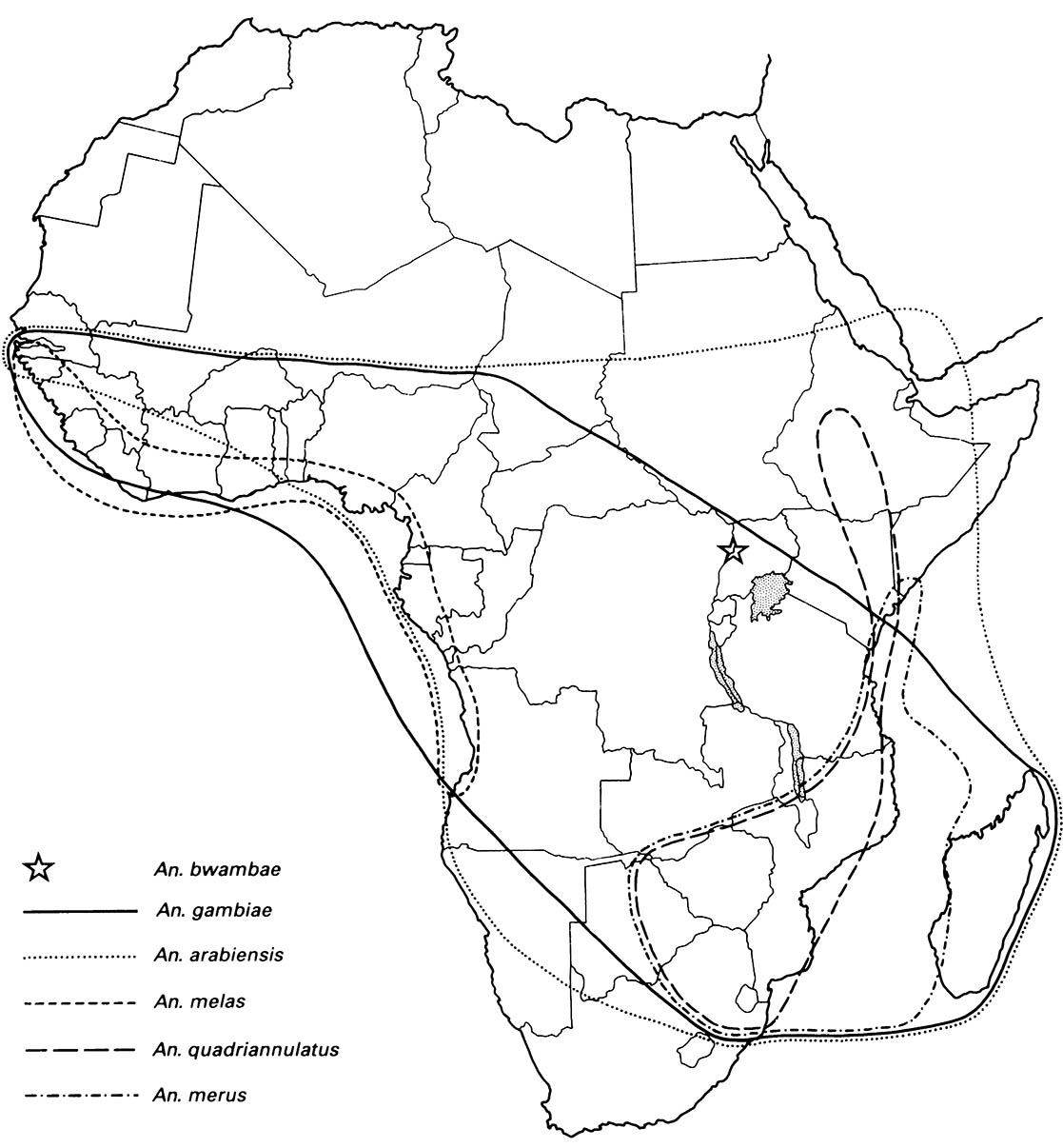Box 15.2. Anopheles gambiae complex
In the early days of African malariology, the common, predominantly pool-breeding Anopheles gambiae was found to be a highly anthropophilic, very efficient vector of malaria virtually throughout the continent. Subtle variation in morphology and biology suggested, however, that more than one species might be involved. Initial investigations allowed morphological segregation of West African An. melas and East African An. merus; both breed in saline waters, unlike the freshwater- breeding An. gambiae. Reservations remained as to whether the latter belonged to a single species, and studies involving meticulous rearing from single egg masses, cross-fertilization, and examination of fertility of thousands of hybrid offspring indeed revealed discontinuities in the An. gambiae gene pool. These were interpreted as supporting four species, a view that was substantiated by banding patterns of the larval salivary gland and ovarian nurse-cell giant chromosomes and by protein electrophoresis. Even with reliable cytologically determined specimens, morphological features do not allow segregation of the component species of the freshwater members of the An. gambiae complex of sibling (or cryptic) species.
An. gambiae is restricted now to one widespread African taxon; An. arabiensis was recognized for a second sibling taxon that in many areas is sympatric with An. gambiae; An. quadriannulatus is an East and southern African sibling; and An. bwambae is a rare and localized taxon from hot mineralized pools in Uganda.
The maximum distributional limit of each sibling species is shown here on the map of Africa (data from White 1985). The siblings differ markedly in their vectorial status: An. gambiae and An. arabiensis are both endophilic (feeding indoors) and highly anthropophilic vectors of malaria and bancroftian filariasis. However, when cattle are present, An. arabiensis shows increased zoophily, much reduced anthropophily, and an increased tendency to exophily (feeding outdoors) compared with An. gambiae. In contrast to these two sibling species, An. quadriannulatus is entirely zoophilic and does not transmit disease of medical significance to humans. An. bwambae is a very localized vector of malaria that is endophilic if native huts are available.




